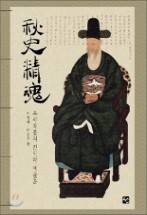A Major Fallacy in the study of Chung-Hee Kim (Chu-Sa 秋史, 1786-1856)
Yong-Su Lee,
The Art Institute of Chicago
The Moam Collection
The achievements of Chung-Hee Kim, a well known scholar based artist, have been recognized by many Koreans and Kim still has strong influence on people in Korea and Korean art society. Resulting from this, Chung-Hee Kim has become one of the most popular and faverate artists in Korea. on the contrary to this, however, considerable drawbacks lie in the study of Chung-Hee Kim.
Up until now, a variety of exhibitions of Chung-Hee Kim's collection have been organized by various institutions, such as “Ink Rubbings of Chu-Sa (Chu-Sa Tak Bon Jeon)” organized by Gwacheon City, “Wan-dang and his wind” organized by Hong-Jun Yu in company with his publication “Biography of Wan-Dang (Wan-dang Pyoung Jeon, published by Hakgojae, 2002)”, and so forth. As a result of these exhibitions, many Koreans have become keenly interested in Chung-Hee Kim’s works.
In particular, Hong-Jun Yu’s book, Wan-dang Pyoung Jeon, has received much interest that he has become an authority on Chung-Hee Kim and his works. Yu received "Man-hae’s (Yong-Un Han) award." Wan-dang Pyoung Jeon is significant as the first in-depth and overall research about Chung-Hee Kim and his works. The book presents Chu-sa's personal life and the whole range of his works by period. This 3-volume book is regarded as a required text for studying Chu-sa and his works by scholars and students.
However, in spite of Hong-Jun Yu's significant contributions, numerous misrepresentations exist in his book and in the exhibitions mentioned above. Even though I do understand we need a very careful and deliberate approaches, treatments and I totally recognize it might be an inappropriate approach to study art history at some points, I would like to point out that a major problem is many inauthentic works are in Yu’s book as well as in the exhibitions. Besides, Yu misunderstood the works of Chung-Hee Kim’s students, such as Don-In Kweon, Hwi-Yong Cho, Jeong-Hyun Yun, and Ha-Ung Lee, for the works of Chung-Hee Kim. In addition, some misunderstandings and fallacies in translation and anecdotes of Chung-Hee Kim have frequently appeared in other primary book resources including Wan-Dand Pyoung Jeon. In my point of view, this is problematic now that it could make people all around the world including Korea confused. And scholars, students, and general public might regard the inauthentic works as the genuine ones, and they might study Chung-Hee Kim and his works based on these incorrect materials and resources.
In this paper I would like to focus much more on the source of confusion between Chung-Hee Kim’s works and that of his students’, especially Don-In Kweon. For this I will demonstrate that the pen names, “Yeum(髥), Yeum-Na(髥那), Na-Ga(那伽), Na-Ga-San-in(那伽山人), Guo-Sa(居士), Byung-Guo-Sa(病居士)” formerly accepted to be that of Chung-Hee Kim are in fact not the case. Rather these pen names are Don-In Kweon’s by the study of Wan-Yeum-Hap-Byuk(阮髥合璧) which is the album made by Chung-Hee Kim and Don-In Kweon. To do this I will select Chung Hee Kim’s works from the Hong-Jun Yu’s book “Wan-dang Pyoung Jeon” and explain why these works are not Chu-Sa’s.
모암문고 茅岩文庫 The Moam Collection www.moamcollection.org



